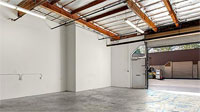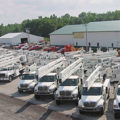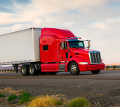You may have heard the term flex space—a growing trend not just among architects and building designers, but among business owners who increasingly demand flex space in their own office areas. But what is flex space, exactly? And more to the point, does your company need flex space of its own?
Understanding Flex Space
The flex space trend goes all the way back to the 1970s, where many companies had large, industrial spaces with front loading docks. Trucks came and went, taking products to other properties, and customers and staff members had to position themselves around the trucks in order to enter the facilities.
When the 1980s dawned, buildings got sleeker, more streamlined. That included industrial space. Meanwhile, the demand for office space—not loading docks, but cubicles and the like—started to grow.
With these changes came the trend known as flex space—basically, one-story businesses with high ceilings, loading docks in the rear, accessible parking, and surface-level landscaping.
What Makes Flex Space So Great?
The benefits of flex space are several: Flex space allows companies to have office space and loading areas, as well as some warehouse space and even room for manufacturing equipment, as needed.
Flex space was a big thing in the 80s and has remained en vogue ever since, and it’s not hard to understand why: If your company wants a truly adaptable and versatile space, flex space is the way to go.
Flex space is economical, too: Companies can rent exactly the space they need, nothing more and nothing less. There is no shared lobby, no shared bathrooms to worry about. If you are starting a new LLC or corporation, your space-to-money ratio is optimized.
Additionally, flex space costs less to build than other office spaces, and as such the rent tends to be extraordinarily low. The bottom line: This is the most cost-effective way to get space for your business.
Are There Any Downsides to Flex Space?
But are there any downsides to flex space? Actually, not really. After all, there is a reason flex space has remained in such high demand over the past several decades.
If there is any downside, it’s that flex space tends to accommodate businesses that fall within certain parameters—say, 1,500 to 60,000 square feet. Companies that need more space than that may not have many options. But that’s the most minor of drawbacks.
What is Flex Space and Does Your Business Need It? – Final Thoughts
For most business owners, flex space really makes a lot of sense, and is worth looking into. Flex space will allow you to do what you need to do, without limitation but also without waste. To learn more about leasing office space, contact an office space leasing agency at your next convenience.









